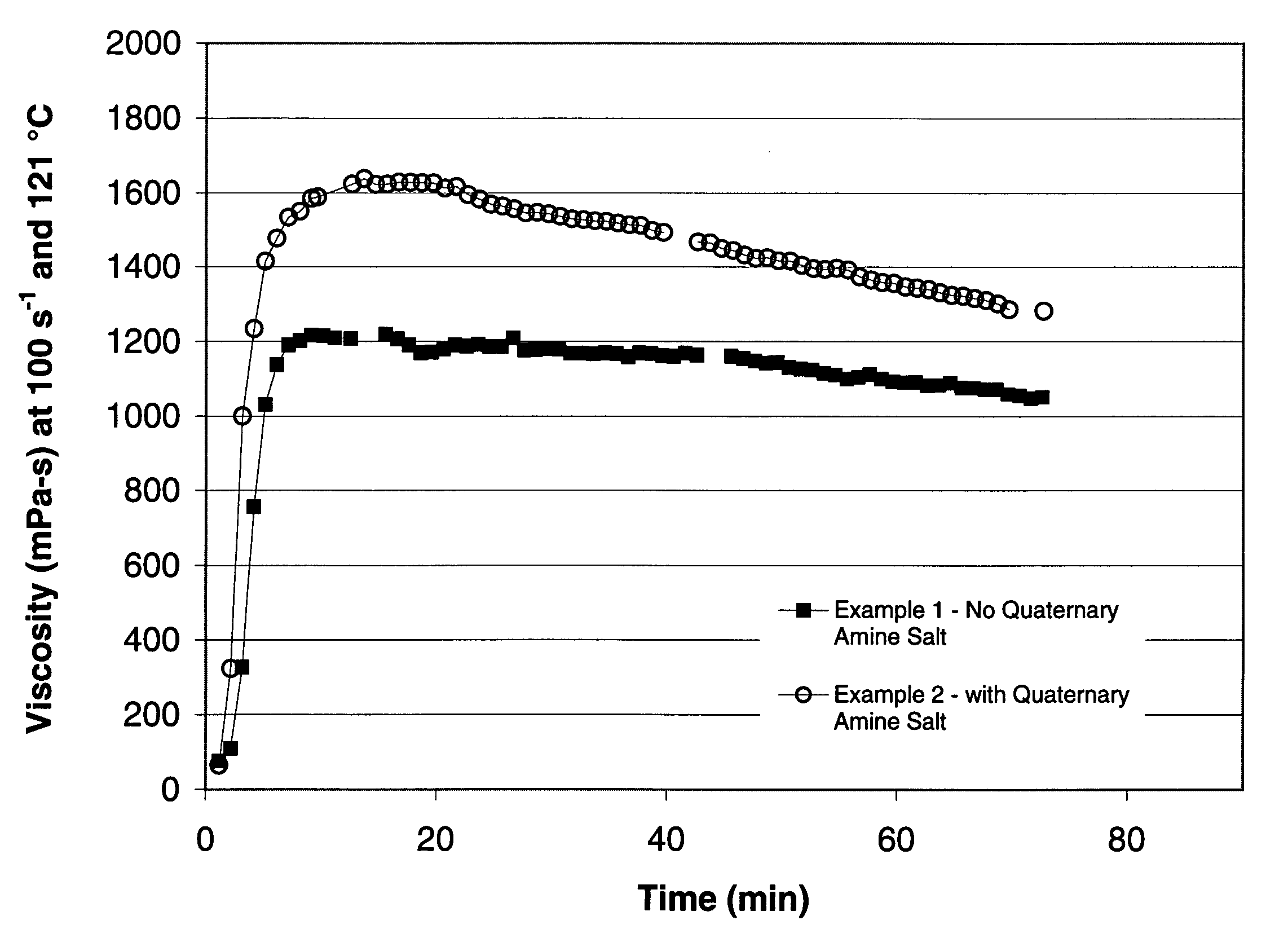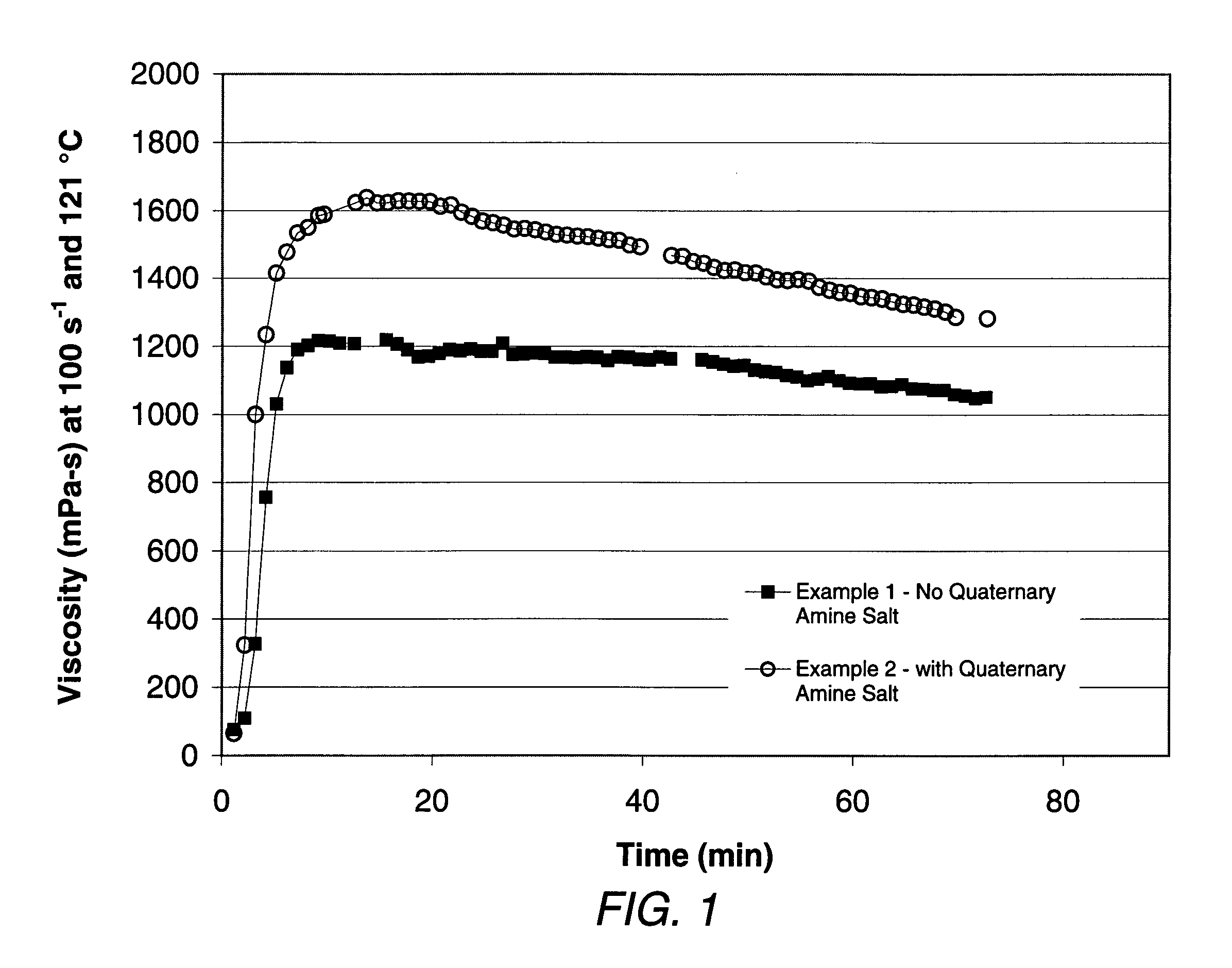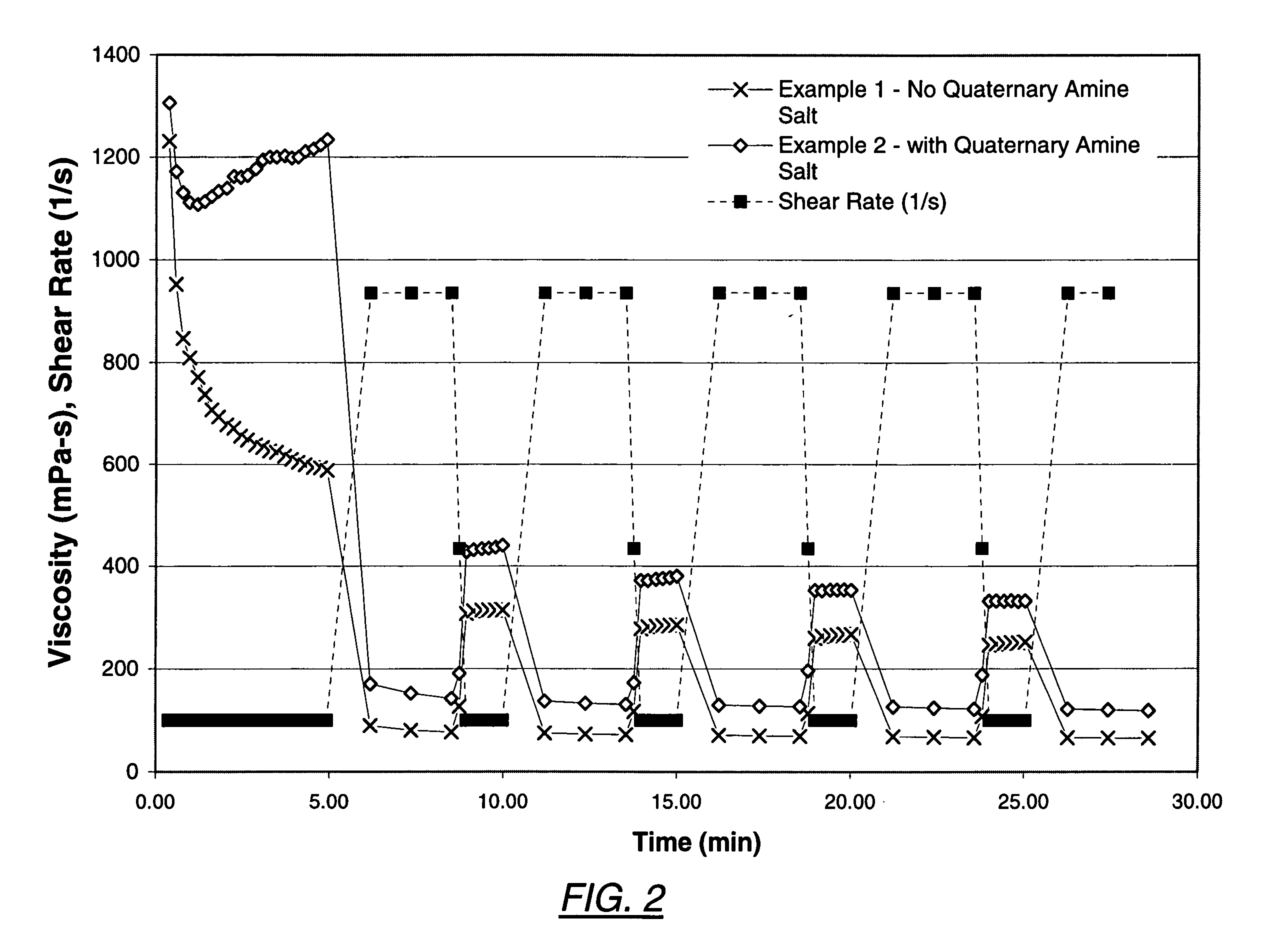Methods of fracturing formations using quaternary amine salts as viscosifiers
- Summary
- Abstract
- Description
- Claims
- Application Information
AI Technical Summary
Benefits of technology
Problems solved by technology
Method used
Image
Examples
examples
[0038] The following examples illustrate the compositions and methods of the invention, as described in the preferred embodiments.
[0039] To prepare examples 1 and 2, a common fluid was prepared by initially mixing 500 ml de-ionized water, 1.8 grams of carboxymethylhydroxypropyl guar, and 0.25 ml of a 1:1 weight mixture of sodium acetate in water. This mixture was hydrated by mixing for 15 minutes at approximately 1500 to 2500 rpm in a Waring blender. Subsequently, 0.36 grams of sodium sesquicarbonate inorganic salt, 1.74 grams of sodium bicarbonate, and 1.5 ml of tetraethylenepentamine were tadded, followed by 4.5 ml of a mixture including sodium zirconium lactate (22.6% by wt), methanol (13.6% by wt), and water (63.8% by wt). Then, to complete the common fluid, 0.5 ml of a mixture composed of dimethyl benzyl ammonium chloride (51% by wt), ethanol (10% by wt), and water (39% by wt) was added, and the fluid was mixed at the same rate for about 30 seconds. To measure viscosity of the...
PUM
 Login to View More
Login to View More Abstract
Description
Claims
Application Information
 Login to View More
Login to View More - R&D
- Intellectual Property
- Life Sciences
- Materials
- Tech Scout
- Unparalleled Data Quality
- Higher Quality Content
- 60% Fewer Hallucinations
Browse by: Latest US Patents, China's latest patents, Technical Efficacy Thesaurus, Application Domain, Technology Topic, Popular Technical Reports.
© 2025 PatSnap. All rights reserved.Legal|Privacy policy|Modern Slavery Act Transparency Statement|Sitemap|About US| Contact US: help@patsnap.com



